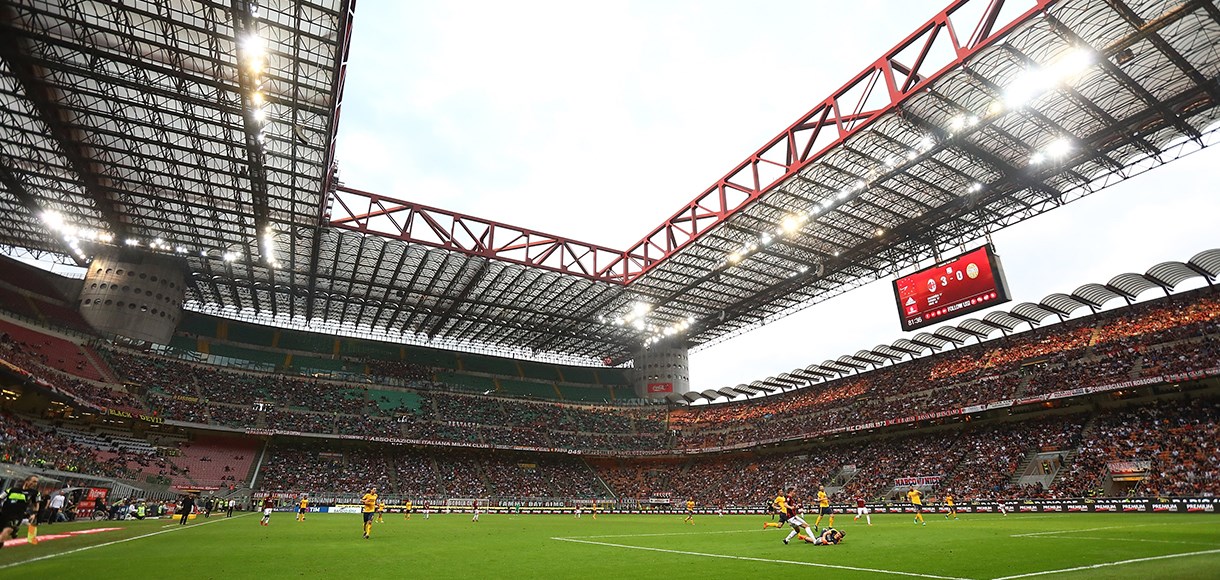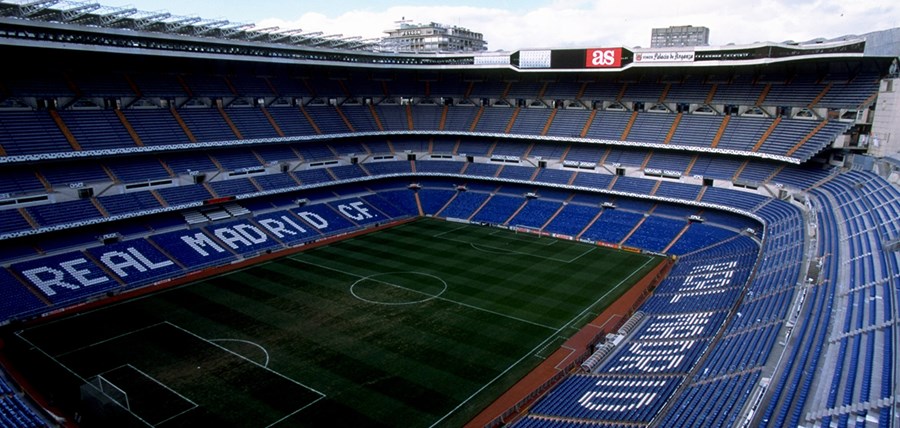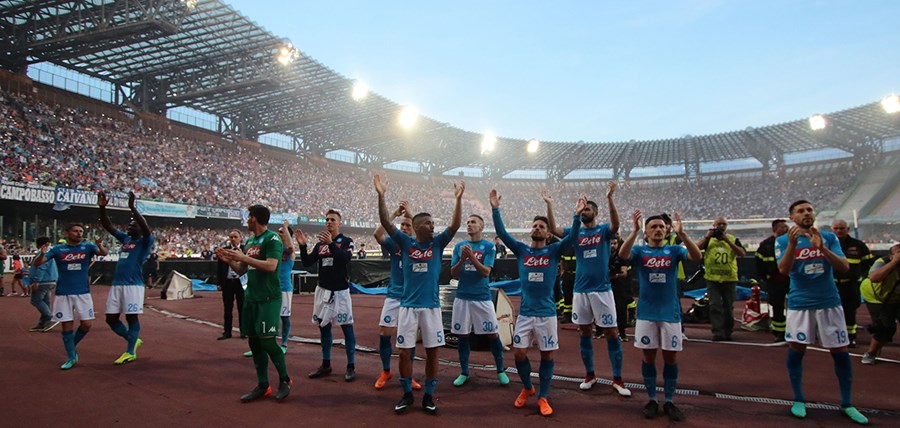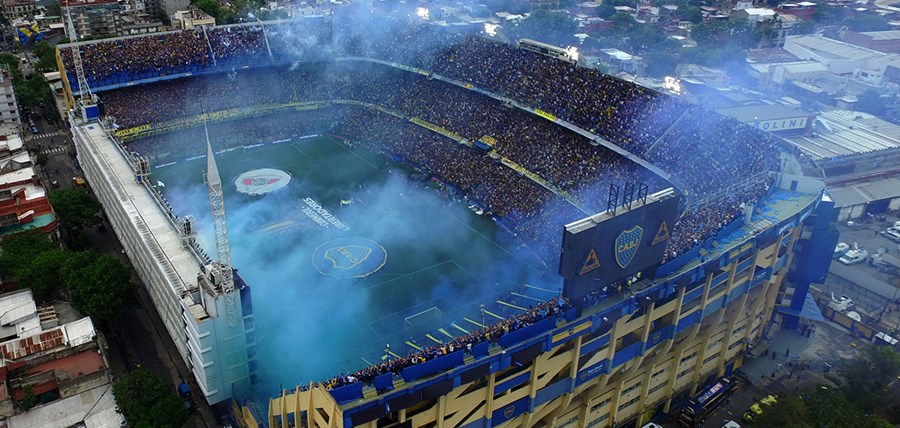The stories behind the names of these 5 iconic stadiums
 Source: Getty Images
Source: Getty Images
From the Bernabeu to La Bombonera, Will Rook explains how these grounds got their name.
San Siro/Giuseppe Meazza, Milan
The tale of the stadium with two names, but which one you should use depends on who you talk to.
Simply enough, the San Siro was built in the eponymous district of Milan in 1925 and was originally used solely by AC Milan.
It wasn’t until 1947 that both Inter and AC shared the stadium, while in 1980 its name was officially changed to the Stadio Giuseppe Meazza.
Meazza was a Milanese footballer who played for both of the city’s clubs, making over 360 appearances at Inter and 42 for AC Milan. He also had three separate spells as manager at Inter.
As a result of his history, Meazza is held in much higher esteem in the blue half of the city, meaning Inter fans will commonly refer to the stadium by its official name.
AC Milan fans, meanwhile, refuse to do so and simply call it the San Siro. Even their official website uses its now-defunct name.
Santiago Bernabeu, Madrid
 Source: Getty Images
Source: Getty Images
From Alfredo Di Stefano and Ferenc Puskas, to Zinedine Zidane, David Beckham and the Galacticos, the Bernabeu has been a home for footballing royalty since it was opened in 1947.
With its immediately recognisable triple-tiered blue seats positioned almost on top of the pitch, it is one of the most iconic stadia in the world – football or otherwise. But the origins of its name are not.
Real Madrid’s stadium is named after a former Nationalist soldier from the Spanish Civil War, who later became club president.
Santiago Bernabeu served as a captain in Franco's army during the war and was awarded one of the highest military medals for his role in an assault on Catalonia.
Bernabeu managed Real Madrid in the aftermath of the war in 1939 and would later become president in 1943.
Bernabeu restructured the stricken club, which had lost the majority of its players and staff in the war and was in charge of building the stadium that now bears his name.
Originally called the Nuevo Estadio Chamartin, a general assembly of club members voted to change its name to honour the president – who stayed in the role until 1978 – in 1955.
San Paolo, Naples
 Source: Getty Images
Source: Getty Images
Napoli’s stadium is named after Saint Paul the Apostle, who taught the gospel of Jesus Christ in the first century.
Paul’s association with the city of Naples comes from his journey to Rome while on trial. Aiming to appeal his innocence directly to Julius Caesar, Paul travelled to the Italian capital from Malta.
This journey involved landing by boat in the Italian coastal town of Pozzuoli in AD 60, which today is part of the metropolitan city of Naples.
Paul stayed there for seven days before beginning the journey to Rome.
Naples city council did attempt to rename the stadium the Stadio Diego Maradona in 1990, but were stopped from doing so. Italian law dictates that a public building cannot be named after someone unless they have been dead for a decade or more.
La Bombonera, Buenos Aires
 Source: Getty Images
Source: Getty Images
The official name of Boca Juniors’ stadium is the Estadio Alberto J. Armando – a former president, who spent a cumulative total of 21 years at the club between 1955 and 1980.
But it is more commonly known as La Bombonera, which translates in English as the chocolate box thanks to its distinctive design.
It is said that the name was coined after architect Viktor Sulcic, who was helping build the stadium, was gifted a box of chocolates as a birthday present.
Sulcic then took the box to meetings to show his co-workers that its shape was similar to that of the stadium they were designing, and La Bombonera was born.
The name caught on and the stadium has commonly been referred to as such since its opening in 1940.
Solitude, Belfast
 Source: Getty Images
Source: Getty Images
OK, so this is clearly not on the same level as the previous four stadia but the name is too good to ignore.
Solitude is the oldest football stadium in Northern Ireland, having opened in 1890, and is home to five-time NIFL Premiership champions Cliftonville.
The stadium takes its melancholic name from the land that it has been built on, which has been known as the Solitude Grounds since at least 1785.
The name is thought to originate from a Rath – an Irish term for an archaeological ringfort – that was once located on the site. In other words, it was once home to an ancient circular fortress.
Visit Betway's football betting page.





































